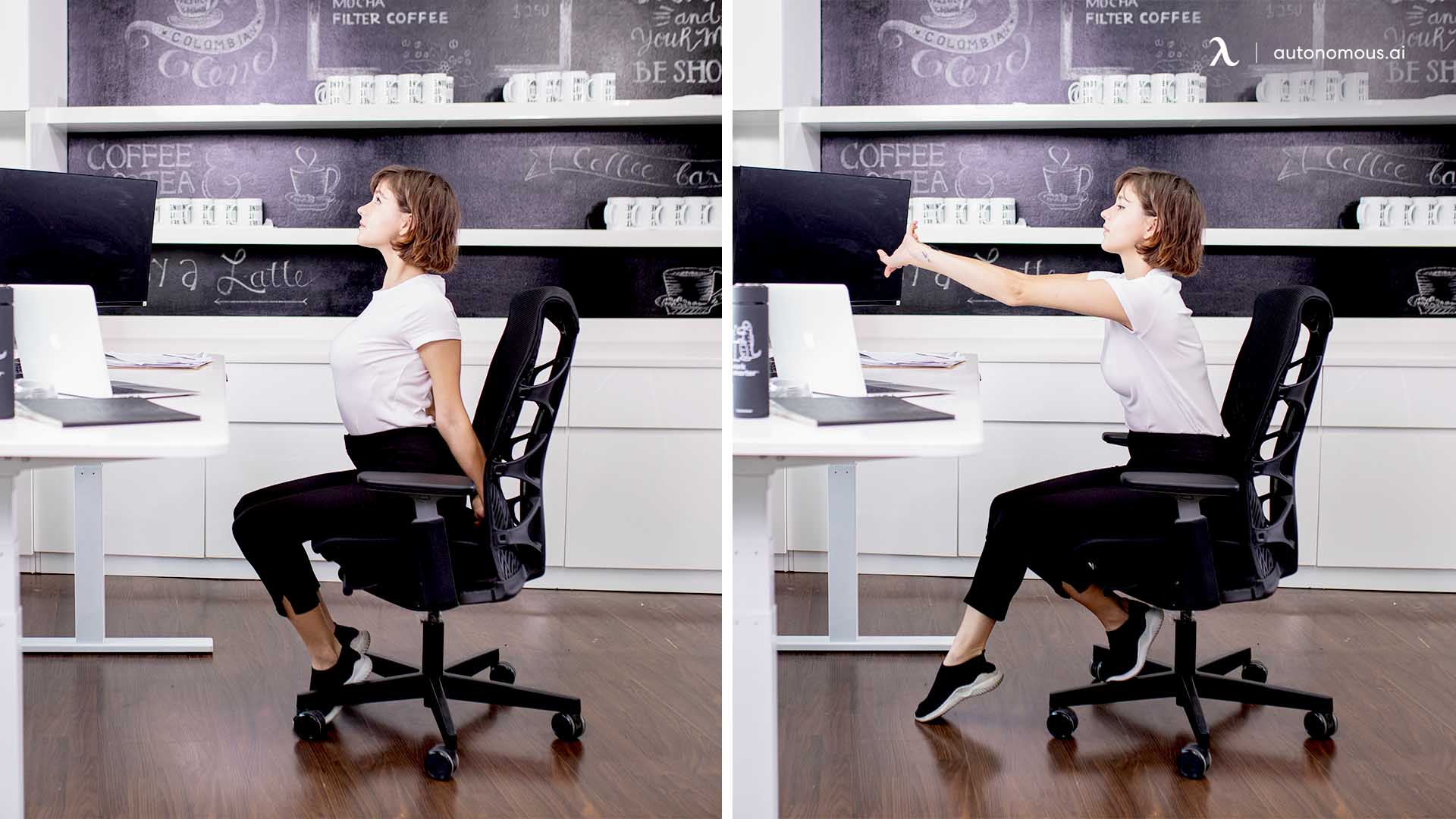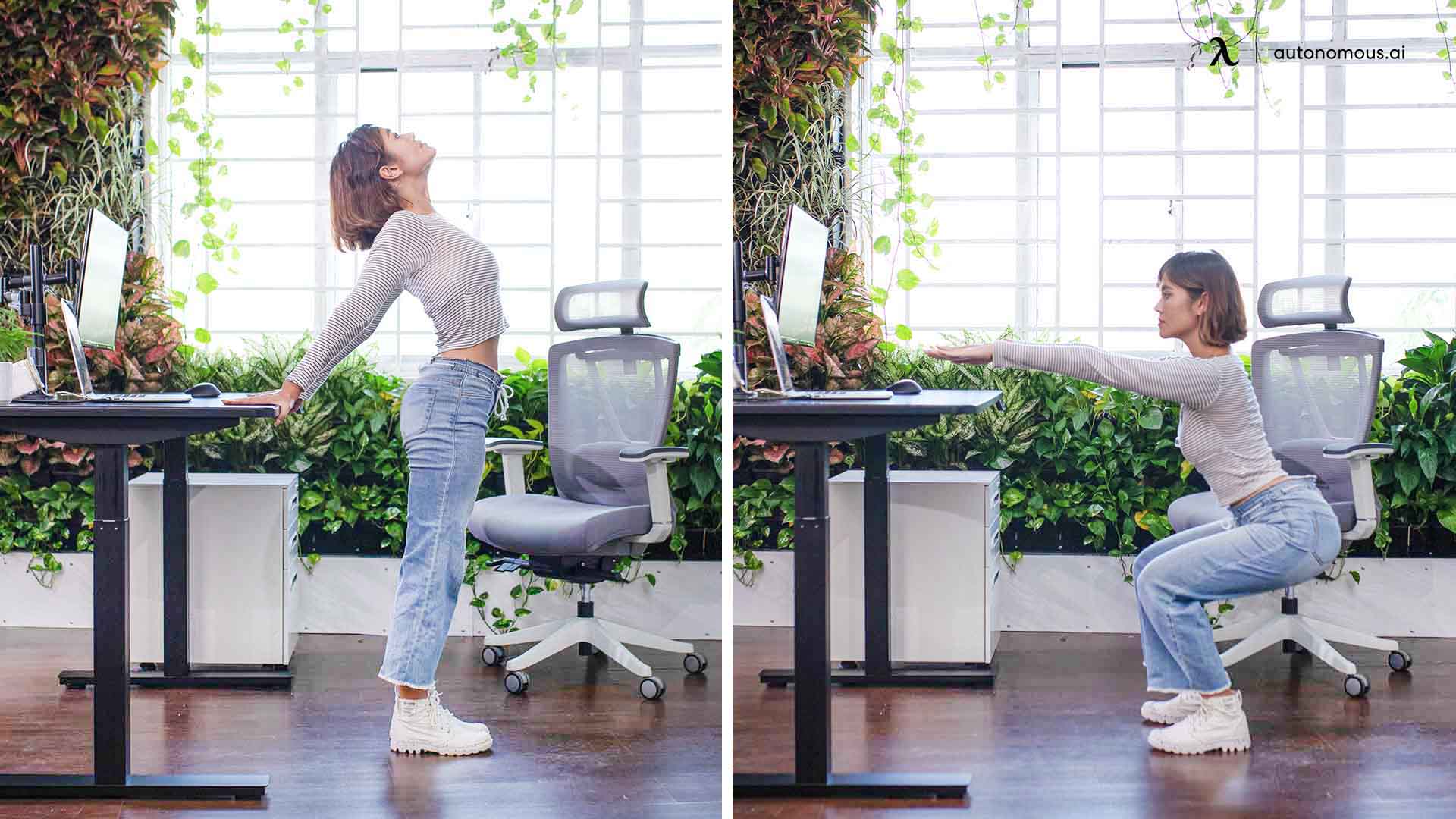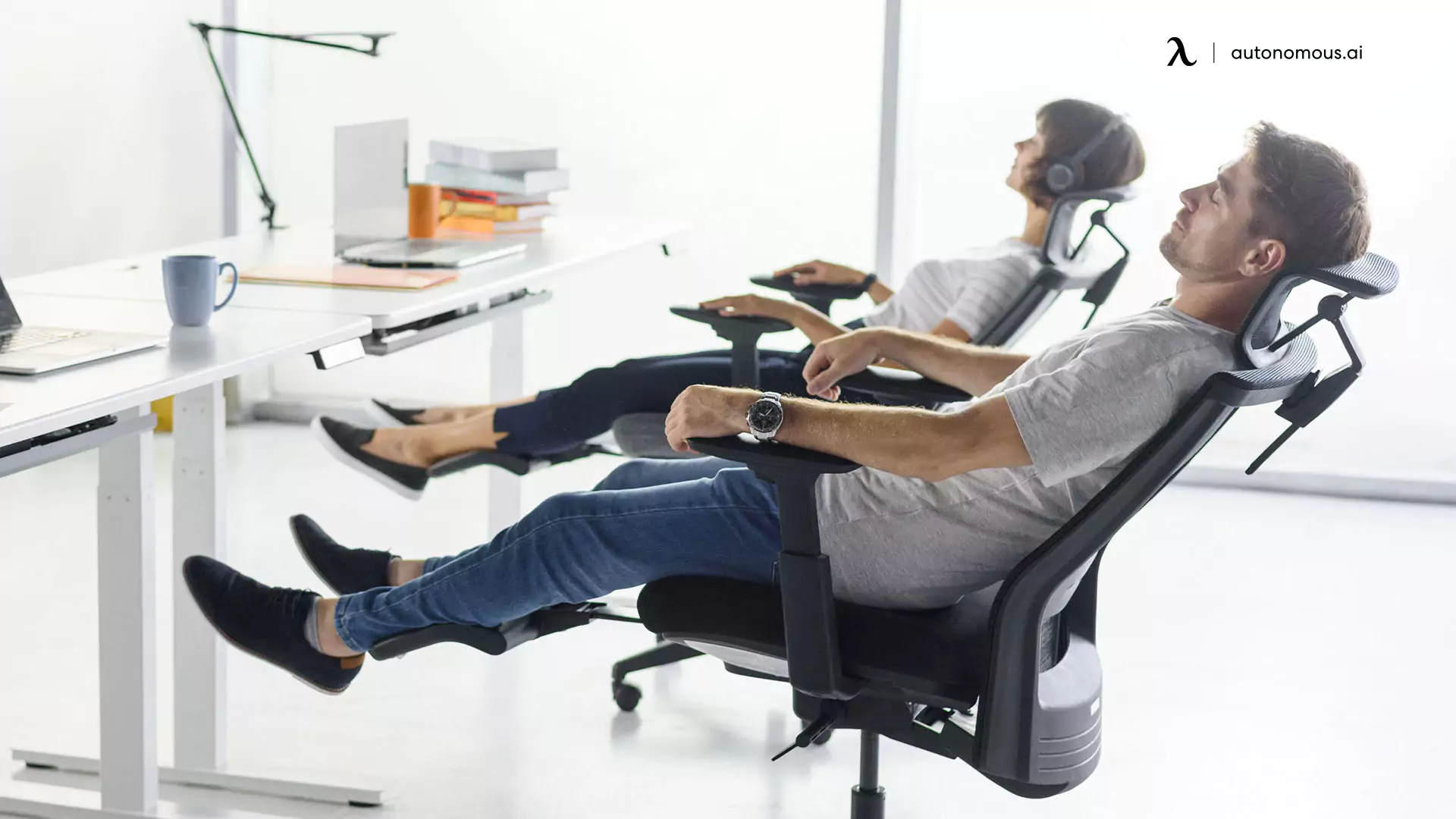
10 Great Back Stretches You Should Do After Workout
Table of Contents
One of the workout components that many of us frequently "forget" about is stretching exercises and back stretches after workout. Fitting everything else in after your steamy, heart-pumping workouts might feel like a nuisance when you're right on schedule. Stretching, however, may help you reduce muscular tension, increase your strength and flexibility throughout time, and eventually benefit you while working out.
You can do this just after a gym session or on your leisure days. Although everyone has varying degrees of flexibility (thanks to heredity), the more you exercise, the more your body adapts to it, and your mobility will develop. Additionally, factors like overuse injuries might affect how flexible you are.
By religiously doing back stretches after a workout, your musculature will be able to move over a larger range of motion (ROM) as you get more flexible, which will potentially help you do much more activities with good form. Additionally, it will make it easier and more effective for you to perform daily tasks.
List of the 10 Best Back Stretches After a Workout
Stretching and core workouts can help you recover from discomfort, regardless of its source, such as a steamy gym workout, slouching over a smartphone, spending every day at a workstation, or even an accident. Ten exercises to relax and improve your lumbar muscles are listed below. Try including these lower back stretches after working out a couple of times each week for optimal outcomes.
1. Spinal Extension
From our seated exercises, sit with your ankles wider than your pelvis, lean forward at your lower body, and shake your head forwards. Take a regular breath. Draw your jaw towards your neck as you descend. Move back slowly to the beginning position whenever you flex through your spine. This is one of the most effective office chair stretches.
2. Kneel to Stretch
Remain with your feet slightly turned outwards and your thighs shoulder-width wide. Tighten your glutes and abs as you relax your body, folding your knees until your quads are parallel to the surface. Your forearms should be atop your knees. Your pelvis up. Later on, take three deep breaths and repeat.
3. Cat-camel back stretches
This is another back stretche after workout for you. Slowly curving and bending your back while on your forearms will cause your spinal, thoracic, and cervical spines to lengthen and flex simultaneously.
4. Cross-legged supine lumbar twist
Extend your forearms towards your sides, palms facing down, while lying down on your spine with your knees slightly bent and your feet flat on the ground. (Consider this yoga stretching; while stretching, breathe; take four-second breaths in and out.)
5. Rotational stretch for the low back
This is a standing lower back stretch where you turn your upper body such that your shoulders spin to one side while seated in a seat with your toes flat on the ground. You can hang on to the armchair for assistance to accomplish a deep muscular stretch. Only venture as far as you can bearably do. Your mid-spine will be pulled forward from your lower spine. You can also invest in some desk exercise equipment to help with any desk ab workout.
6. Stretching mermaids
Kneel on the ground to the left of you and cross them. Grab your knees using your left hand. Inhale as you elevate your right forearm. Inhale as you sense the opposite stretch side of the body as you stretch and meet that arm past your head.
7. Bending forward when seated
Here is how to stretch thighs after a workout, with your legs extended in front of you while you stay seated on the ground. It would help if you wrapped your feet ' soles in a yoga belt or towel; keep it in place for the time being. Take a deep breath and raise your forearms to the sky. After exhaling, gradually lean forth by turning your hips, bringing your tummy to your thighs.
8. Rotating the trunk's spine
Lay on your back with your legs up towards your breast to create the impression that you are sitting on a chair. It would help if you had a 90-degree bend in both your knee joints. Now lay your hands firmly on the floor with the palms facing up.
9. Wall slide stretch
Let’s do the next back stretche after workout with us! Position yourself so that your head, collarbones, and buttocks are forced against the wall. Keeping your elbows flexed at a 45-degree angle and your fingers pointing in front, keep your hands at shoulder height.
10. Lumbar twist when seated
Start by sitting tall, putting both of your legs out in front of yourself, and crossing the right knee across the left thigh before bending the left knee. Place the left elbow around the outside of your right thigh, put your right forearm on the ground beside you, and turn to gaze over your right side shoulder.
Back and neck discomfort can be excruciating and incapacitating. In certain circumstances, everyday stretches and resistance training might help relieve neck and back discomfort at home. However, because everyone's recovery is different, it can take longer to resume normal activities. Many people may find that consulting a physiotherapist will speed up their recovery.
There are several upper back stretches after a workout that you may do if you have back discomfort to assist and loosen the muscles. Before starting any home gym equipment workout program, as with any other, make sure you see your doctor. Experts will advise you on the appropriate stretches for your situation and those you should avoid.
Benefits of Back Stretches After Workout
Engaging in back stretches after a workout is beneficial for several reasons:
- Increased flexibility
Stretching after a workout helps improve flexibility in the muscles and connective tissues of the back. This can lead to improved range of motion and overall mobility, reducing the risk of stiffness and muscle imbalances. If you're someone who monitors your calorie expenditure closely, understanding the difference between active calories vs. total calories can help you gauge the impact of your stretching routine on your overall fitness goals.
>>> What Burns More Calories: Elliptical or Stairmaster?
- Muscle recovery and relaxation
Stretching the back muscles after a workout promotes blood circulation to the area, which can aid in muscle recovery and reduce muscle soreness. It also helps relax the muscles, relieving tension and promoting a sense of relaxation and well-being.
- Improved posture
Many workouts involve movements that can place stress on the back, potentially leading to poor posture over time. Stretching the back muscles helps counteract these effects by lengthening tight muscles, releasing tension, and promoting better alignment of the spine. Consistent stretching can lead to improved posture, reducing the risk of postural issues that might arise from prolonged sitting or incorrect exercise techniques. For those struggling with lower back pain, knowing the single best exercise for lower back pain can complement your stretching routine, providing comprehensive support for your back health.
- Injury prevention
Regularly stretching the back muscles can help prevent injuries by maintaining flexibility and promoting proper alignment. It can reduce the risk of strains, sprains, and muscle imbalances that can occur due to tight or overactive muscles.
- Enhanced performance
When the back muscles are flexible and properly conditioned, they can work more efficiently during workouts. Stretching after a workout can help optimize muscle function and performance, allowing for better movement patterns and reduced risk of overuse injuries.

Tips for Back Stretches after a Workout
- Target the major muscle groups
Focus on stretching the major muscles of the back, including the erector spinae (long muscles that run along the spine), latissimus dorsi (large muscles in the mid-back), and the muscles of the upper and lower back.
- Hold stretches for an adequate duration
Hold each stretch for about 20-30 seconds to allow the muscles to relax and elongate. Avoid bouncing or jerking movements during stretches, as this can increase the risk of injury.
- Breathe and relax
Take deep breaths during each stretch, exhaling as you gently deepen the stretch. Relax any tension in your body and avoid overstretching or pushing beyond your comfortable range of motion.
- Gradually increase the intensity
Start with gentle stretches and gradually increase the intensity or duration of the stretches over time. Avoid pushing yourself too hard, especially if you're new to stretching or have any existing injuries or conditions.
- Consult a professional
If you have any concerns or specific back issues, consider consulting with a healthcare professional, such as a physical therapist or a certified fitness trainer. They can provide guidance on appropriate stretches and modifications tailored to your needs.
Remember, stretching should be done in conjunction with a proper warm-up before workouts and should not replace other important components of a well-rounded fitness routine, such as strength training and cardiovascular exercise.

FAQs
Why does my back hurt after exercise?
Your lumbar back's tissues and ligaments may become overextended or torn due to excessive or improper exercise, leading to pain, tightness, and even muscle spasms. Understanding the differences between active and resting calories can help you adjust your exercise routine to avoid overexertion and reduce the likelihood of back pain.
Is it okay to stretch after a workout?
Stretching is a good idea at such times. Most of the time, people are more flexible after exercising since they've moved their bones and tendons, improving their blood flow. You can surely benefit most from stationary stretches during this time.
Is it good to stretch a sore back?
The two greatest approaches to relieving chronic back pain are getting stretched and targeted workouts for improving the back and abdomen. Healthy gluts assist the spine during walking, standing, and sitting, and healthy abdominal or hip flexion muscles enhance posture. Your mobility will increase if your muscles are properly stretched. For example, incorporating a criss-cross workout can be an effective way to engage your core and support your back, further enhancing your overall fitness routine.
Conclusion
Incorporating back stretches into your post-workout routine is more than just a quick fix for soreness; it's an essential practice for long-term physical health and performance. By dedicating a few extra minutes to these exercises, you can significantly enhance your flexibility, reduce the risk of injuries, and improve your overall range of motion. Whether you're recovering from an intense gym session or counteracting the effects of daily activities like sitting at a desk, these stretches will help maintain the balance and strength of your back muscles.
Additionally, if you're looking to complement your stretching routine with other forms of exercise, consider low-impact options like using a walking pad. The WalkingPad C2 offers a convenient way to stay active, especially if you're working from home. For those wondering about strength training, you don't necessarily need weights to build muscle. There are effective ways to build muscle without weights that can be easily integrated into your routine. Make stretching and diverse forms of exercise a regular part of your fitness regimen, and you’ll likely see the benefits not just in your workouts, but in your everyday life as well.
Stay connected with us!
Subscribe to our weekly updates to stay in the loop about our latest innovations and community news!
Interested in a Link Placement?
Spread the word
.svg)



/https://storage.googleapis.com/s3-autonomous-upgrade-3/production/ecm/230914/bulk-order-sep-2023-720x1200-CTA-min.jpg)

/https://storage.googleapis.com/s3-autonomous-upgrade-3/production/ecm/230824/Amanda-8035f52a-7230-4c31-9bda-626fd7c392bf.jpg)